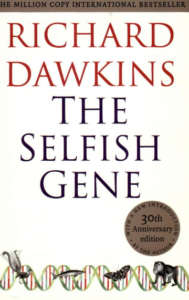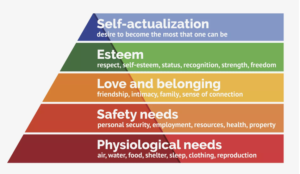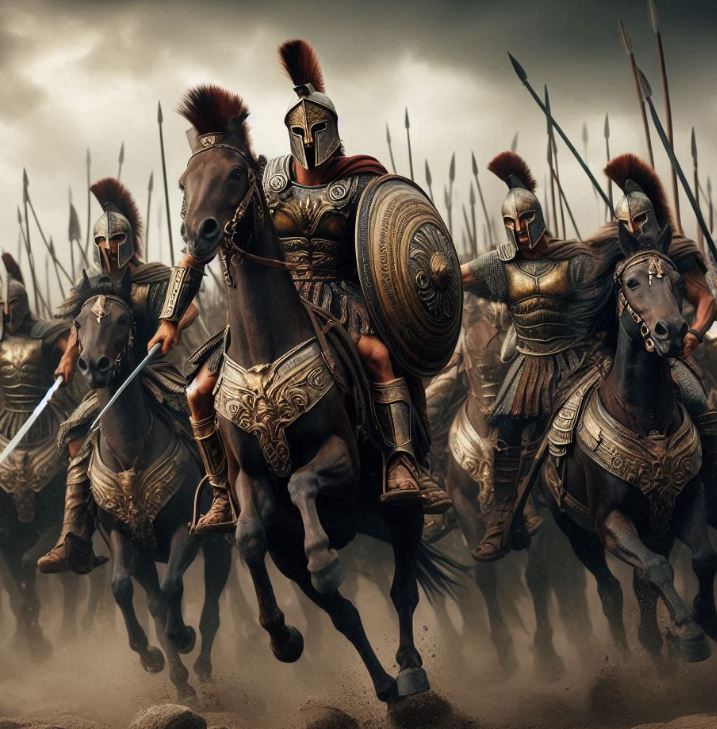L’histoire est l’histoire des vainqueurs.
History is written by the victors.
-Hippolyte Taine-
All history is an intriguing tale. Theoretically, history should be the story of all people, but those we encounter in history are mostly the winners. Rome started from the city of Rome, unified the Italian peninsula, and became an empire that ruled over the entire Mediterranean and Europe. After Rome was divided into East and West in 395, the Western Roman Empire fell in 476, but the Eastern Roman Empire, or Byzantine Empire, lasted until 1453. Rome survived for 2000 years.
However, few remember the Etruscans of the Tarquin dynasty, who had developed a distinct culture on the Italian peninsula before the Romans and ruled Rome from 616 BC to 510 BC during its early regal period. Rome became an empire on the back of victories against the Etruscans, and the name and people of Etruria disappeared into history.
Ancient wars were competitions of winner-takes-all. After capturing the Etruscan city of Veii in 396 BC, Rome massacred the men and enslaved the women. The Roman general who led this siege appears in Plutarch’s Lives and is called the second founder of Rome, Camillus.
Yet, Rome itself was started by a small group of survivors who somehow made it to the area. The last scene of the movie “Troy,” where a few people escape through a secret tunnel underground, might depict them. According to legend, Aeneas, the son-in-law of the Trojan king, and his followers escaped from burning Troy. They traveled through various regions before landing on the western coast of Italy and founding the city that would become Rome.
Regardless of whether the legend of Rome is historically accurate, the claim that Rome was built by people who had lost everything in war elsewhere and fled seems quite plausible.

Evidence of this is that the early inhabitants of Rome were mainly single men. Romulus, the mythical founder of Rome, initially focused on finding wives for these single men, eventually resorting to the abduction of women from the neighboring Sabines since there were no women in Rome to marry. This indicates that the early Roman community was made up of people who had been completely robbed of their families.
In ancient wars, the victor took everything, and the loser lost everything. At best, the fate of the losers was in the hands of the victors. What about competition today? At first glance, it seems much fairer, but the competition mode that rewards everything to the winner has not changed significantly. The first law of competition still revolves around winning and losing, with winner-takes-all as the outcome.
Look at sports competition, where the rules of the game are clear. Some may question the significance of a silver medal, like Jaouad Gharib’s second place at the Beijing Olympics, but the difference in rewards compared to the effort and skill of the two athletes is enormous. Moreover, Wanjiru’s name will be remembered by more people and for a longer time than Gharib’s. There can never be two winners in a marathon. Today’s precise timekeeping tools can differentiate even the smallest fractions of a second. Being a marathon runner and winning a global competition like the Olympics even once is a mark of success.
Winners are not only strong but also lucky. The conditions of the day and their own physical state must align perfectly, and similar conditions must not occur for other competitors. Victory is not solely a matter of skill. This is evident in tennis and golf tournaments, where winners change frequently throughout the year.
In fact, all of us living ordinary lives are lucky. Being alive as a human is in itself a miracle. Even if we are not marathon runners, we all are winners from the start, having outcompeted over 200 million rivals in a race that lasted more than two hours. Some may not consider it a miracle to be born from a competition of 200 to 500 million, but what about our parents? For them to exist as humans, they had to survive hundreds of thousands of years of climate change, food scarcity, and the madness of wars, continuing for at least 500,000 generations.
If this is not a miracle, then what is? Or perhaps they were stronger than Superman or Wonder Woman. Our existence today proves they did not fail even once. Our ancestors must have faced countless competitions in the process of succeeding. Not all competitions result in severe consequences for the losers, but in today’s world, even a single competition can make a difference between heaven and hell for people’s lives.
Imagine two people, Round Stone and Sharp Stone, walking through a forest when suddenly a wolf starts chasing them. After a brief exchange, they both start running. The wolf catches up with Round Stone, who falls behind, while Sharp Stone manages to escape to the village. They found themselves in an unavoidable competition, and the difference in this competition could mean life or death. The winner survives, and the weaker disappears.
How many people have failed college entrance exams by just one point? Every year, numerous people fall behind in competition by a single point, showing how competition can determine life’s outcomes. And what about job positions that select only one candidate or contests that have only one winner? The world changes over very slight differences. That’s competition. And while the actual difference in skills may be minimal, the outcomes for winners and losers are starkly divided. The difference made by competition is significant.
While losers today do not disappear entirely, they must seek new competitions while winners enjoy their luxuries. Competition inevitably creates winners and losers. This law of victory is sometimes called the law of the jungle or survival of the fittest, a term that harshly describes the brutal reality.
Looking at nature, it seems governed by the law of the jungle. Survival is not only about hunting but also about competing for food and avoiding predators. The logic of survival of the fittest and competition rules all of nature.
In the animal kingdom, members of the same family undergo a competition process to establish a hierarchy. This hierarchy in the animal world is related to reproduction. Animals of the same species prioritize establishing a hierarchy upon first meeting. This is also true for the pets we raise at home. They perceive all members of our family in terms of hierarchy, usually placing children, who are still unable to judge, below them in rank. In the animal world, it is common for the strongest male to have multiple females and priority over food resources, embodying the idea that the winner takes almost everything.

The survival of the fittest is not exclusive to the animal kingdom. Even in the seemingly peaceful forest, a competition for survival takes place, and the same principle applies in the beautiful gardens in front of our homes. Pine trees, for example, emit a toxic substance called ‘gallotannin’ from their roots to prevent other plants from encroaching. As a result, not even common weeds can grow near pine trees. The reason we feel good when entering a forest is due to a substance called ‘terpene’ emitted by trees, which has more than twenty pharmacological effects, including antiseptic, calming, and anti-inflammatory properties. The phytoncides we breathe in and enjoy in the forest, a word derived from “phyto” meaning plant and “cide” meaning to kill or sterilize, refers to plant-based antibacterial agents.
When plants face enemies or are stimulated from the outside, they emit antibacterial substances like phytoncides to defend themselves. Such substances can be considered as the plants’ weapons of war, beneficial to humans and the foundation of forest bathing benefits. If this is a chemical war, there is also a physical combat, where vines emerge as the victors. Vines rely on straight, upright trees for growth, but young trees that have not grown enough can die from being deprived of sunlight by these vines.
The phenomenon of the survival of the fittest is also invariably present in the microbial world, including bacteria and fungi. Fermented foods occupied by lactobacilli prevent the intrusion of harmful bacteria. If this balance is disrupted, all animals, including humans with a storage of lactobacilli in their intestines, could not survive the invasion of pathogens.
While life can be adorned with beautiful words and literature, it is impossible to ignore that living involves competition for survival and prosperity. Of course, not all living beings are engaged in competition alone. A closer look at nature reveals the existence of cooperation and symbiosis. Through such observation, it might be realized that cooperation is a better technique for life. However, even cooperation can be seen as a form of competition from a long-term perspective for one’s life and offspring. Therefore, living can essentially be considered synonymous with competing.

Table of Contents
Selfish Humans
Humans are selfish creatures. Richard Dawkins, the author of “The Selfish Gene,” locates the reason for human selfishness in our genes. He argues that humans are merely machines created to preserve their genes. It’s not that we are selfish, but rather our genes are. The goal of these genes is to replicate themselves as much and as long as possible.
Humans are inherently selfish, and our existence is regulated by our genes. The smallest living unit is the cell, and our bodies are made up of cells. However, it’s not the cells themselves, nor the chromosomes within the cell nucleus, nor the DNA that makes up the chromosomes, but a tiny fraction of the 3 billion bases in our DNA, specifically about 30,000 genes, that puppeteer us.
Whether Dawkins is right or not, it’s clear that we all live to satisfy our own desires. While altruism exists, it too serves to satisfy human selfishness. Even altruistic individuals who sacrifice themselves for others would not be satisfied if forced into acts of service. Selfishness is composed of various desires. Compassion and sympathy for others can also be considered altruistic desires. Therefore, the term “selfish” here does not pertain to the conventional concept of good and evil, but rather to the pursuit of benefits for one’s own survival and growth.
Our daily lives seem to be composed of actions aimed at fulfilling our selfish desires, including survival and reproduction. However, humans are not driven solely by these animalistic desires. There are social desires to mingle and be recognized, aspirations for self-actualization and growth, and altruistic desires to help others and coexist.
A unique aspect of human needs, as posited by Abraham Maslow’s theory, is that these needs are hierarchical. Abraham H. Maslow, an American psychologist, divided human needs into five stages, emphasizing that the needs at a lower level must be satisfied before individuals can crave the needs at a higher level.

:max_bytes(150000):strip_icc()/maslow-s-hierarchy-of-needs--scalable-vector-illustration-655400474-5c6a47f246e0fb000165cb0a.jpg)
Maslow’s categorized needs are not the entirety of our desires, nor is his theory entirely accurate. It is a hypothesis. However, it’s hard to deny that we all prioritize the need for survival. No matter how much one loves music, if life becomes unsustainable, they might have to sell their beloved violin. While there are individuals who value something more than their own life, for most people, their safety is more important than maintaining face.
We are selfish individuals who tirelessly strive to satisfy our own needs. Yet, humans have developed technologies and systems beneficial not only to themselves but also to society as a whole, going against the seemingly natural selfishness and the law of inequality. Could this be because humans possess desires that consider not just immediate benefits but also future benefits for themselves and their offspring? Such desires could be called altruistic. What we should focus on today are these desires, not the lower needs like survival and safety, but the higher needs that satisfy spirituality and emotions.
Scarcity of Resources
The Trojan War, the backdrop for the movie “Troy” starring Brad Pitt, is based on the epic “Iliad” by the Greek poet Homer. It’s a story passed down like a myth. However, archaeological excavations and historical research have revealed it to be a real war, making it the first war known to us, though not recorded in history. Historians estimate that the Trojan War took place around the 14th to 13th century BCE.

The Mycenaean kingdom flourished around the southern Aegean Sea, while across the sea, on what is now Turkish land, the Hittite empire was established. Troy was a city within the Hittite empire. Homer depicts the Trojan War as an adventure and romance of heroes. However, it’s highly likely that the war they waged was a struggle for life.
Michael Wood, the author of “In Search of the Trojan War,” points out that the Mediterranean, where the Mycenaean dynasty was established, fundamentally lacked the conditions for self-sufficiency, as did the region where the Hittites were established. Therefore, they saw ‘plundering’ as essential for economic activity. The heroes praised in Homer’s epic were not individuals of great virtue but those skilled in plundering. This is evidenced by Achilles, the greatest hero of the “Iliad,” boasting of plundering 23 cities.
According to the paper “When Civilization Collapsed: Death of the Bronze Age” by historian William Stiebing, around 1300 BCE, the Mediterranean faced overpopulation, drought, and famine. In this state of food shortage, the Mycenaean dynasty, already based on a plunder economy, promptly embarked on plundering expeditions, with Troy being one of their targets.
Not only them but all selfish individuals face competition when encountering the environment of limited resources. This is because their own desires take precedence. Competition arises naturally when human desires meet a world of scarce resources. Resources are scarce everywhere on Earth. Without efficient use or reinvention of these precious resources, competition for them is inevitable.
The phrase “the history of war is the history of humanity” suggests that human history has been accompanied by war. Over the recorded 3,421 years of human history, only 268 years were without war. Has the modern era improved? Not according to Alvin Toffler, who in his book “War and Anti-War,” states that from 1945 to 1990, there were only three weeks without war globally. It’s as if we fought for 15 years and rested for a week. War, the worst form of competition, has been a constant occurrence.
War is an inescapable part of human history. Through war, humanity has achieved scientific advancements, redrawn maps, and altered the course of history. Why do wars occur? Some may say it’s a byproduct of civilization, others that it stems from human nature. However, one thing is clear: wars occur when there’s a failure to agree on how to divide limited resources.
A contemporary of Napoleon and the author of “On War” (Vom Kriege), Clausewitz, elegantly defined the purpose of war as a means to achieve political objectives. War is, beyond a clash between groups, the most extreme form of political action. However, most wars arise from competition over wealth. Historically, victory in war was a means to acquire wealth. By raising an army and subduing another nation, one could gain their civilization, stored grains, cultivated lands, and even slaves and soldiers.

Rome’s continual engagement in war was ultimately for wealth acquisition. The Italian Peninsula, where Rome was located, was not particularly affluent. The land was insufficient for the growing population, and there was a lack of production in metals, minerals, or manufactured goods. Rome’s conquests were driven by greed for wealth.
The author Montgomery asserts in “A History of Warfare” that all wars in the history of the ancient Near East were rooted in overpopulation. The earliest civilizations began on fertile lands along rivers. These fertile areas became densely populated, while the surrounding regions were too barren to inhabit. There were battles over securing even an inch more of the fertile land along the rivers. For the losers of such competitions, death was often the result.
It’s human selfishness and the scarcity of resources that create competition. Even today, consumers are driven by competition over the rarity of products and time. The terms ‘limited edition’ or ‘almost sold out’ put forth by sellers trigger a sensitive response, as they evoke a sense of scarcity and fuel competitive psychology among consumers. Typically, material resources are finite. There’s a limit to the agricultural products that can be produced on Earth, and resources like oil and coal can only be obtained in limited quantities. The material scarcity of resources inevitably makes competition a necessary mechanism. If the US were to discover or reinvent an alternative to oil within its borders, the conflict between the Arab world and the US might be resolved.
Reducing competition or making it more productive requires alternatives that can address resource scarcity. Fortunately, humans have discovered that cooperation can create more resources than taking from others, and their share can increase as well. Yet, competition has not ended. The methods of competition and the forms of rewards have changed, but the competition to have more than others continues.
On the other hand, the desires pursued by humans today are moving from lower needs satisfied by material resources to higher needs focused on personal growth and coexistence with others. The resources required to satisfy these higher needs are not limited resources like oil or food, but things like design and storytelling, which can be infinitely created with human creativity alone.
In biology, the ‘Competitive Exclusion Principle’ states that two species competing for the same resources cannot coexist at the same place and time.
Economics as a discipline also starts with the ‘scarcity’ of resources and human ‘desire’. Economic problems arise because human desires are infinite, whereas the resources available to satisfy those desires are scarce.


답글 남기기